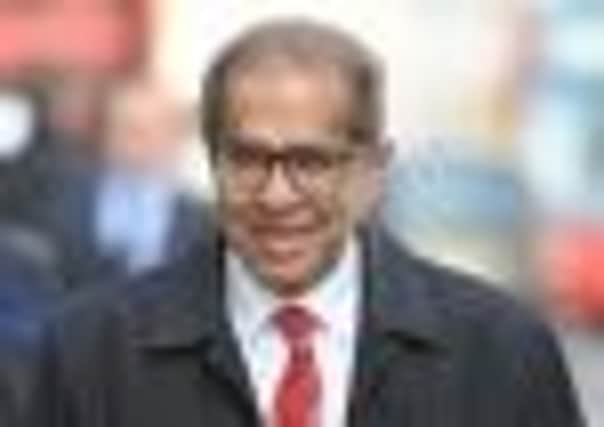Pathologist is struck off after botching G20 victim Ian Tomlinson post-mortem


Freddy Patel was banned from practising as a doctor
yesterday after being investigated numerous times and suspended on two previous
occasions by medical watchdogs over his work dating back a decade.
He was found guilty of
Advertisement
Hide AdAdvertisement
Hide Admisconduct but was not at the Medical Practitioners Tribunal Service (MPTS), sitting in Manchester.
Mr Tomlinson’s widow Julia said: “We aren’t surprised he has been struck off. It is more of a surprise that he was able to work as a pathologist for so long and that he was selected to do the post-mortem on Ian.
“We are pleased that he will not be able to put any more families through the ordeal he caused us, but the damage he has done can’t now be undone.”
Patel, who qualified at the University of Zambia in 1974 and has practised as a pathologist for 35 years, was excused attendance to look after his sick wife but listened in on the hearing by conference call from London.
The medic’s
actions were found to be misleading, dishonest and liable to bring his profession into disrepute over parts of his handling of the post-mortem examination of Mr Tomlinson.
The Rev Robert Lloyd-
Richards, chairman of the MPTS fitness to practise panel which heard the case, told Patel he had an “unwarranted confidence” in his ability, “a deep-seated
attitudinal problem” and also “lacked insight”.
Mr Tomlinson, 47, died on 1 April 2009, after he became caught up in the G20 riots in the City of London as he tried to get home and was forcibly pushed over by Pc Simon Harwood.
Patel carried out the post-mortem on Mr Tomlinson and concluded that he died from a heart attack, but questions were raised when an American tourist came forward with a video recording of him being hit.
Further medical reports
Advertisement
Hide AdAdvertisement
Hide Adsuggested that Mr Tomlinson died from an injury to his liver that caused internal bleeding and then cardiac arrest.
At the inquest into Mr Tomlinson’s death, Patel’s claim that he died of a heart attack was discredited by the jury in favour of a string of experts who said he died of internal bleeding.
Patel’s first post-mortem also made it all but impossible to conclude with any certainty how Mr Tomlinson came to die.
His two reports into his examination of Mr Tomlinson’s body were found to be inadequate.
Patel admitted he did not include in his first report that he mentioned to police during the examination that he found injuries that could be consistent with a baton strike. The MPTS panel found that Patel did not properly consider or comment on the fact that abdominal bleeding found on Mr Tomlinson could have caused his collapse and death.
Niall Dickson, chief executive of the General Medical Council, said: “We asked for him to be removed from the register as the best way of protecting the public because his conduct fell far below the standards we expect.
“We are therefore pleased by today’s outcome.”